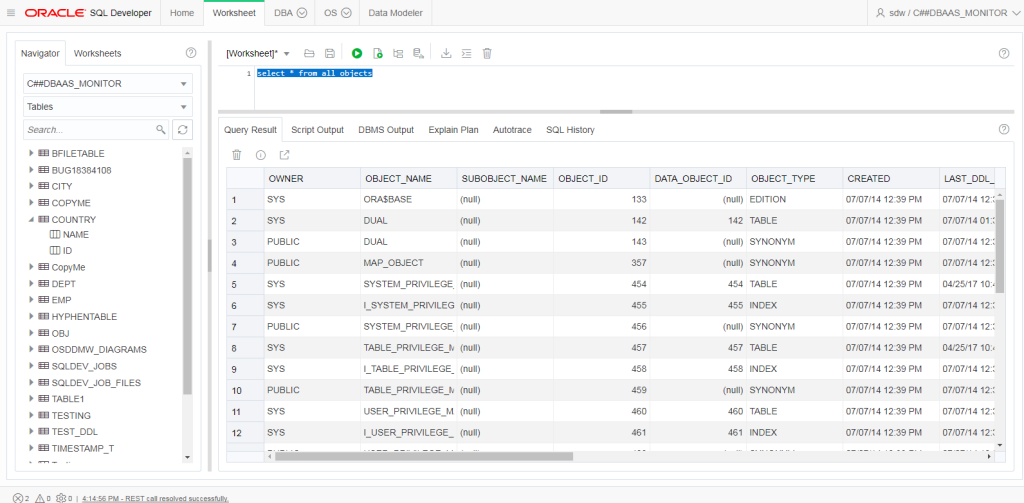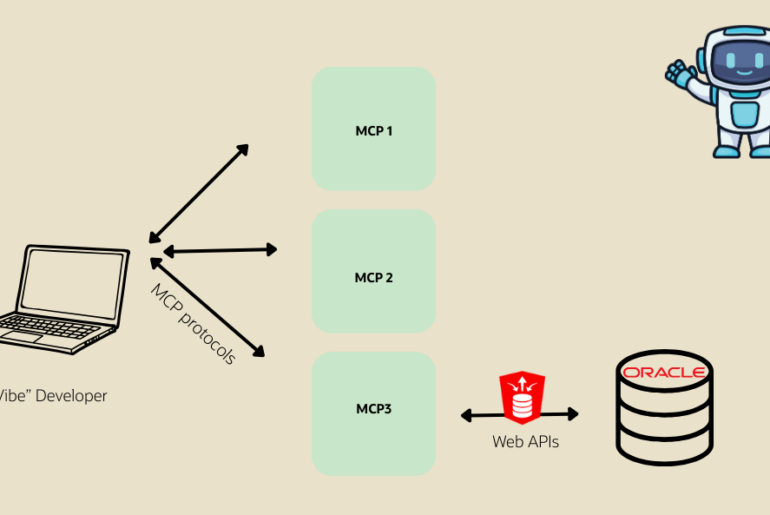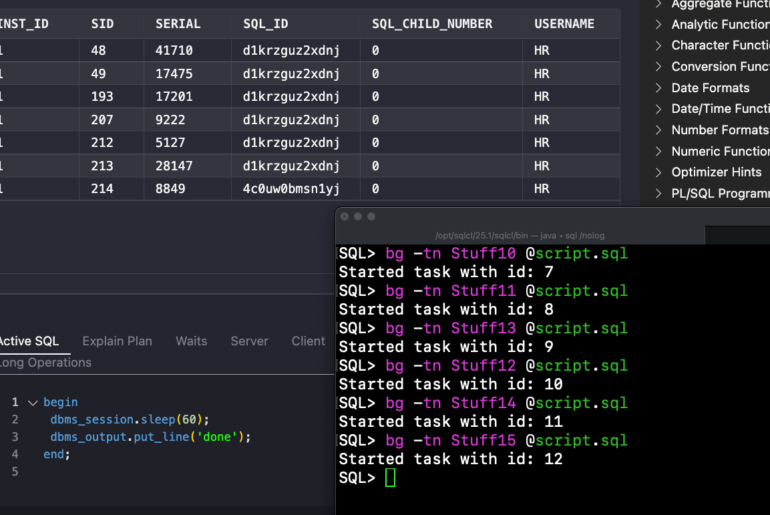In the year 2000…

No, let me start over.
IN the year 2017, we have Oracle SQL Developer version 17.2. It started as Project Raptor in 2005. It’s got a pretty wide and deep feature set covering these areas:
- PL/SQL IDE
- SQL editor
- GUI for browsing and managing database objects
- Ad Hoc reporting
- Database Design & Data Modeling
- Database Administration
- 3rd Party RDBMS Migrations to Oracle
- Deploy and Administer Oracle REST Data Services
- REST Enablement of the Database
- Command Line Interface
Where do we have left to go?
A few predictions…
1. Even more DBA things
The last update saw support for Sharding and Data Guard. As SQL Developer is now fairly ubiquitous on the Oracle developer and DBA’s desktop, those users are asking for more and more feature support. And the Database team here at Oracle likes to work with us on bringing you new features and better access to existing features.
Right now we are doing some work on our Data Pump interface.
2. Did you say Cloud?
No? Well too bad, I said it 🙂
We’re working to extend the Cart so you can use it to load data to any Oracle Public Cloud Service that involves an Oracle Database. You’ll be able to drag and drop tables and files to a Cart, and then upload it to your Cloud Service, where the data will get loaded for you. I’ll have a lot more to say about this soon.
3. Speaking of Cloud…
SQL Developer WEB is still a thing. We’re very close to making it available for our Oracle Public Cloud Service customers.

We’re still deciding if this will be available for customers with on premises databases.
Customers that need to spin up a service and want to interact with it immediately from the database perspective will appreciate this interface versus figuring out how to download, install, and connect to their database with SQL Developer on their desktop.
4. More REST Stuff
We’re doing everything we can to make REST enabling your database with ORDS as easy and flexible as possible. That means that a good bit of GUI support in SQL Developer. We’ll continue along this track and keep adding stuff.
5. The Great Unknown
We have lots of side projects. Open-sourcing parts of the product. Creating a package manager for handling database changes for your applications. We have things we WANT to do. And sometimes those things get promoted to things we DO do – like Oracle SQLcl.
We’re still customer driven. We always will be. We’ll continue listening to you and looking at your requests from support, the forums, tweets, blog comments, and of course our Feature Exchange.
What’s not unknown is this –
Oracle SQL Developer isn’t going away. It’s going to continue to be included with your Database license (it’s free!). Our team will continue supporting it and building new stuff and enhancing existing stuff (the formatter!)
Stay tuned, we’ve got lots of cool stuff coming your way.







18 Comments
Any update on the web version of sql developer ?
Hopefully available for all this Summer. Stay tuned.
Where is Data Guard??? This version (17.2).
On the DBA tree…requires the broker and 12c DB.
SQL Developer Format command in Version 17.2.0.188
This option formats the entire worksheet along with exec statements and breaks them down. is there an option to avoid it (or) only format the selected block of statements.
I just tried this, I selected only what I formatted and hit Ctrl+F7 – it only formatted the highlighted text.
Version 17.2? Really? Wow, mine is really outdated, I’m still on 4.2.
Jokes apart, what’s the difference between version and build? Just changing the label seems a bit lame (no offense). Feels like “let’s skip a dozen numbers to look more imponent”.
Even on Oracle’s download page there’s no more mention to the real/old version number. Did you officially jump from 4 to 17 like that?
Did you officially jump from 4 to 17 like that?
Yes, yes we did.
Sounds cool.
This means we’d need a standard means of recording and reporting on versions of components.
Is there any thinking been done on any of this yet, or is this “aspirational”?
It would a good tool to have.
Thanks.
yeah, we’d build that too
It’s been started on, and got pretty far actually. It’s current shelved as we work on more pressing business needs.
Can you add any detail about the package manager?
I’ve been thinking about this and how there is no standard automated way to retrieve and apply PLSQL based software to a database
I’m curious what this pacakage manager might cover.
Cheers!
The idea is you could have a database object/plsql set of objects in a NPM type of scheme that could handle versions and dependencies. We’d give you a CLI you could use to manage it. Hopefully it would make app upgrades in your database easier.
What is the future of SQL Developer Unit Test?
Fixing bugs as they’re reported.
I would REALLY like to see a BIG ENHANCEMENT on the formatter! From version 4.1 to 4.2 from my point of view it was a big step back because there is no time left for me to learn another “programming language” with lots of tries and errors to get a well formatted code! Currently the formatting is rather annoing and frustating => not usable for me!
Please have a look at other products like pl/sql-developer from “allround automations” and, please, don’t let me wait another year! THX IN ADVANCE!
I’m not sure wether it’s a good idea to have everything include within one tool. For my own, I’m not allowed to operate as a DBA. So it would be a nice idea to have a list of checkboxes to switch on/off (visible/unvisible) specific features depending on roles like “DBA”, “Developer”, “Designer”, …
There are more formatting options coming. Specific requests are best though.
You can turn off the DBA features actually.
Those new features sound exciting! I look forward to hearing more about the web-based version. SQL Developer is my IDE of choice and I continue to use it even after moving from a PC desktop to a MacBook.
Glad you are working on the Data Pump interface. I am using DBaaS from AWS and have no access to the underlying server. Since Data Pump writes exports to a directory on the underlying server’s file system, I can’t easily get a copy to import to another database. To be sure, I can do an export and import if there is a DB Link between the two databases, but what if I don’t? I’ve gone back to using old EXP and IMP – at least they can write the dump to the client.